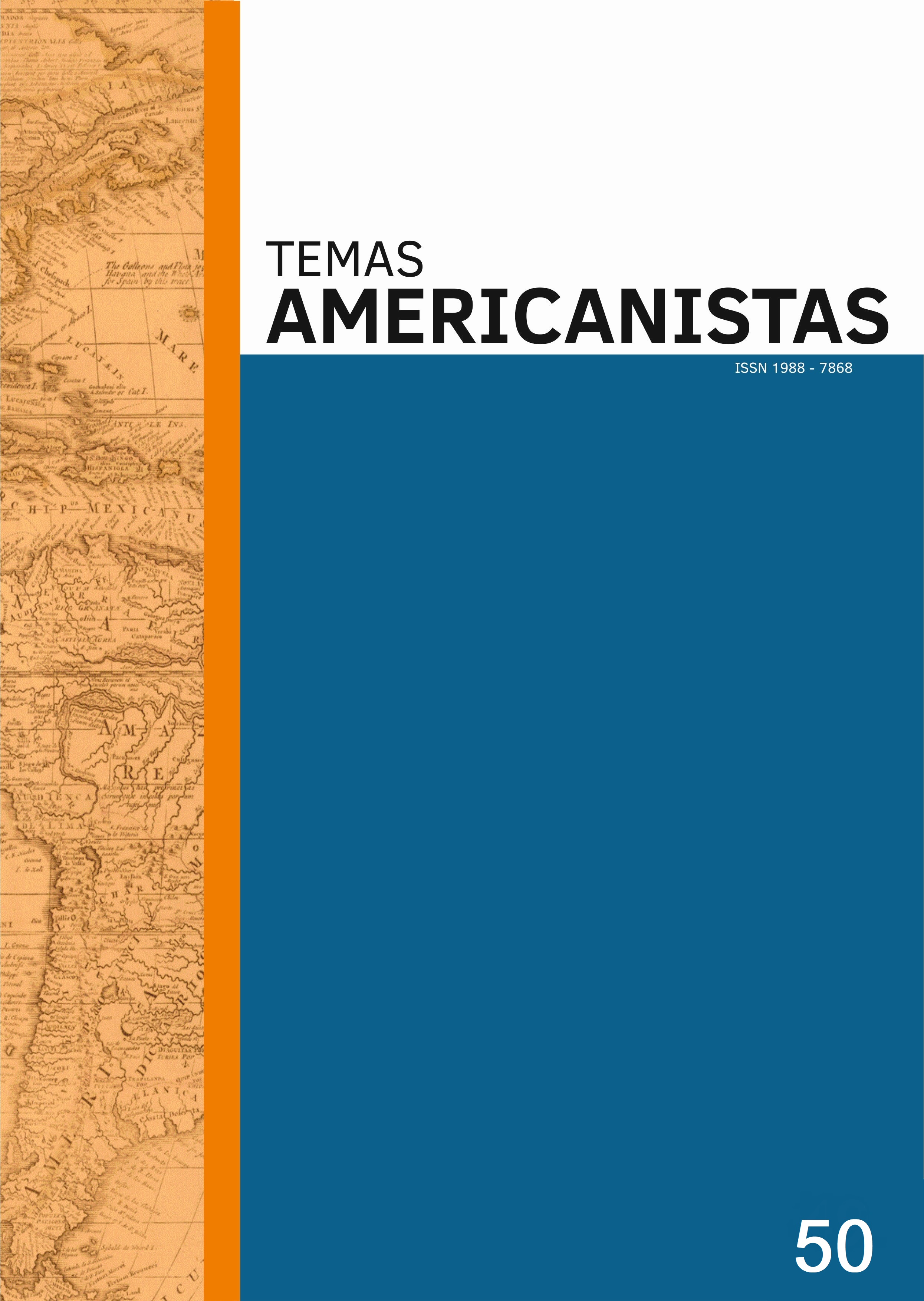Resumen
Este artículo rastrea el universo sensible con que las mujeres peninsulares de la Monarquía Hispánica de los siglos XVI, XVII y XVIII construyeron la otredad americana. A partir del análisis de varias cartas de la colección compilada por Rocío Sánchez Rubio e Isabel Testón Núñez en El hilo que nos une, el texto se concentra en reconstruir la experiencia emocional de muchas mujeres andaluzas, castellanas y extremeñas que durante los siglos XVI, XVII y XVIII vieron partir rumbo al Nuevo Mundo a sus hombres sin regreso. El propósito de dicho análisis es acercarse a la manera en que dicha comunidad femenina significó aquellas tierras lejanas para convertirlas en un lugar imaginario que cobraba realidad a partir de emociones como el dolor, el resentimiento, la añoranza, el enojo, el abandono, la soledad y la desolación. Y es que las mujeres que se quedaban sin sus hombres de aquel lado del mar dieron vida, en sus mentes, a la realidad indiana desconocida a partir de todo aquello que experimentaban como consecuencia de aquella difícil separación. Así, para muchas de ellas, América era la geografía sensible e imaginaria donde se localizaban esos reinos de riqueza, abundancia, oportunidades y lujuria que habían atraído a sus maridos, padres, hermanos e hijos y donde habitaban aquellas “otras” por quienes éstos las habían sustituido para siempre.
Citas
Ahmed, Sara, Queer Phenomenology, Durham and London: Duke University Press, 2006.
Broomhall, Susan, Tarbin, Stephanie, Women, identities and communities in Early Modern Europe, New York: Routledge, 2016.
Classen, Albrecht, Time, Space and Travel in the Pre- Modern World: Theoretical and Historical Reflections. Explorations of World Perceptions and Processes of Identity Formation, Boston/Berlin: Walter de Gruyten, 2018.
Córdoba, Julián, “El viaje femenino a América durante la primera mitad del siglo XVI”, Iberoamérica Social: Revista-red de estudios sociales, Vol. 3, N.4, 2005.
Escandón, Patricia, “Esta tierra es la que mejor calienta el Sol. La emigración española a América siglos XVI-XVIII”, Biblioteca Jurídica Virtual, México: Instituto de Investigaciones Jurídicas, UNAM.
Fabian, Johannes, Time and the Other: How Anthropology Makes its Object, New York: Columbia University Press, 2014.
García Abásolo, Antonio, “Andalucía y México. Emigración y mundo privado de los pobladores andaluces en Nueva España”, en Antonio García Abásolo, Fernando Quiles y María Ángeles Fernández, Aportes humanos, culturales y artísticos de Andalucía en México. Siglos XVI-XVIII.
Moscoso, Javier, “La historia de las emociones, ¿de qué es historia?”, en Vínculos de Historia, Departamento de Historia de la Universidad de Castilla-La Mancha, n. 4, 2015.
Ordahl Kupperman, Karen (ed.), America in European Consciousness, 1493-1750, (USA: University of North Carolina Press, 1995).
Palafox Menegazzi, Alejandra, “Mujeres andaluzas en América, siglos XVI-XVII”, disponible desde internet en http://www2.ual.es/ideimand/mujeres-andaluzas-en-america-siglos-xvi-xviiii/
Pascua, María José de la, “A la sombra de hombres ausentes: mujeres malcasadas en el mundo hispánico del setecientos”, Studia Storica, 30 n. 2, 2016.
Piquer Sanclemente, Ruth, “Penélope y el tejido del tiempo”, XVI Seminario de Arqueología Clásica, Madrid, Universidad Complutense de Madrid, 2018.
Pita Pico, Roger, “Cartas, sentimientos y peripecias de los emigrantes españoles a territorio neogranadino, siglo XVI”, Revista de Historia de América, Num. 153, (enero-diciembre, 2017).
Sánchez Rubio, Rocío, Testón, Isabel, El hilo que nos une. Las relaciones epistolares en el Viejo y el Nuevo Mundo (siglos XVI-XVIII), Extremadura: Universidad de Extremadura, 1999.
Sánchez Rubio, Rocío, Testón, Isabel, “Mujeres abandonadas, mujeres olvidadas”, n. 19, (1997).
Sanfuentes, Olaya, Develando el Nuevo Mundo. Imágenes de un proceso, (Chile: Pontificia Universidad de Chile, 2009).
Turner, Victor, The Anthropology of Experience, Chicago: Illinois University Press, 1986.
Wiesner-Hanks, Merry E., Mapping Gendered Routes and Spaces in Early Modern Europe, New York: Cambridge University Press, 2000.

